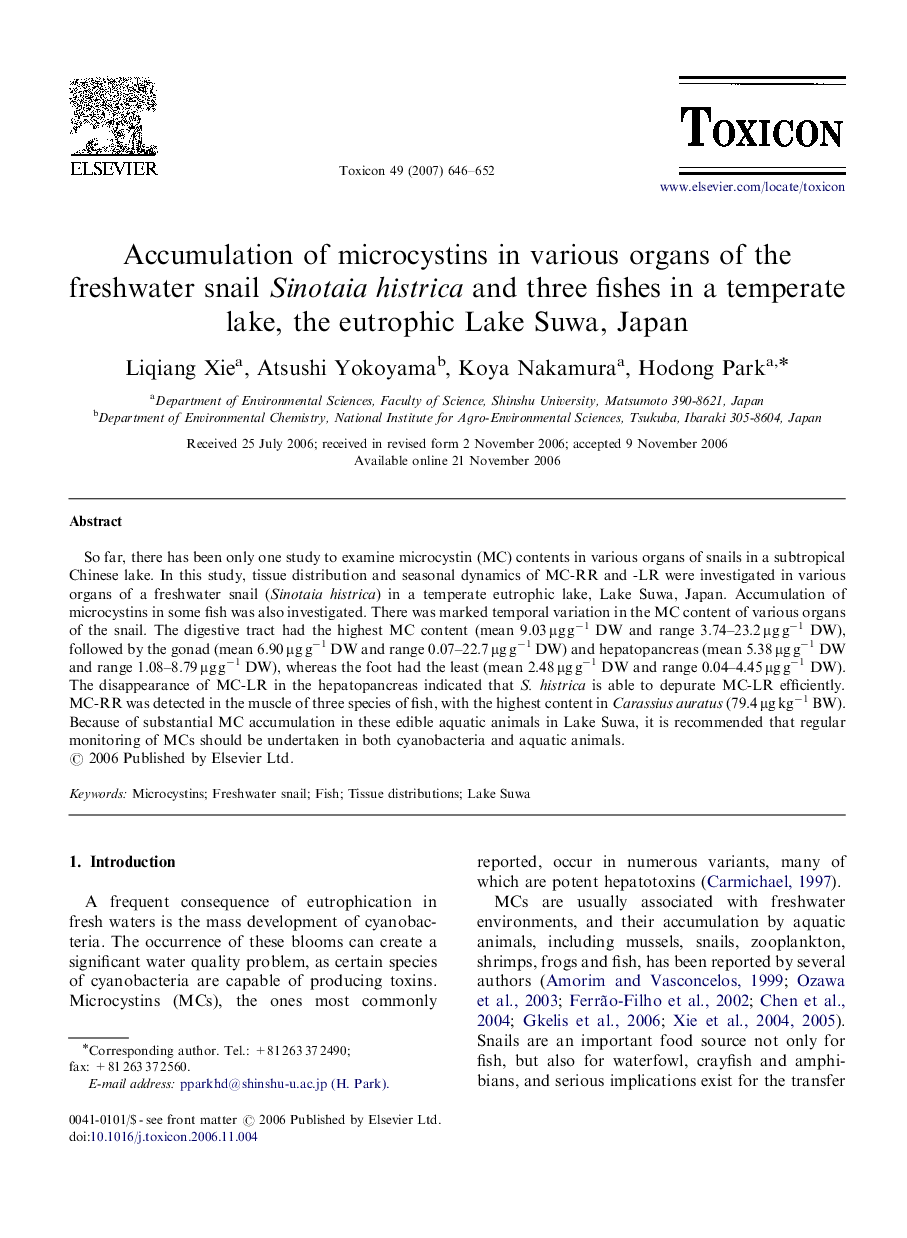| Article ID | Journal | Published Year | Pages | File Type |
|---|---|---|---|---|
| 2066118 | Toxicon | 2007 | 7 Pages |
So far, there has been only one study to examine microcystin (MC) contents in various organs of snails in a subtropical Chinese lake. In this study, tissue distribution and seasonal dynamics of MC-RR and -LR were investigated in various organs of a freshwater snail (Sinotaia histrica) in a temperate eutrophic lake, Lake Suwa, Japan. Accumulation of microcystins in some fish was also investigated. There was marked temporal variation in the MC content of various organs of the snail. The digestive tract had the highest MC content (mean 9.03 μg g−1 DW and range 3.74–23.2 μg g−1 DW), followed by the gonad (mean 6.90 μg g−1 DW and range 0.07–22.7 μg g−1 DW) and hepatopancreas (mean 5.38 μg g−1 DW and range 1.08–8.79 μg g−1 DW), whereas the foot had the least (mean 2.48 μg g−1 DW and range 0.04–4.45 μg g−1 DW). The disappearance of MC-LR in the hepatopancreas indicated that S. histrica is able to depurate MC-LR efficiently. MC-RR was detected in the muscle of three species of fish, with the highest content in Carassius auratus (79.4 μg kg−1 BW). Because of substantial MC accumulation in these edible aquatic animals in Lake Suwa, it is recommended that regular monitoring of MCs should be undertaken in both cyanobacteria and aquatic animals.
